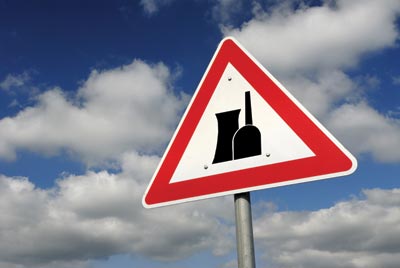Generation IV nuclear reactors
14 October 2010
Nuclear's new generation

Scientists and engineers are designing new types of nuclear reactor that could be cheaper, greener, safer and more secure than those we have now. But they have plenty of problems to solve. Some of these are technical. Some are financial
After a 20-year slump the power of the nucleus is making a comeback. In the past two years, China has started to build 15 new nuclear power stations. Russia, South Korea and India are growing their nuclear power programmes. At the end of 2009, there were 22 licence applications for new nuclear plants in the USA. The Italian government has said it will reverse a ban on nuclear power.
The reasons for all this are not hard to find. One is climate change. Nuclear reactors don't produce greenhouse gases and are more reliable than solar or wind power.
Then there's energy security. Countries don't want all their eggs in one basket. They especially don't want to rely on fossil fuels from politically unstable countries.
Generation IV
According to a recent report – by the international Energy Agency and the Nuclear Energy Agency – the world's nuclear power capacity could more than triple in the next 40 years, from 370 gigawatts to 1200 gigawatts.
But the report also says that more advanced technologies will be needed if nuclear is to play a role after that. Today's reactors are mostly "second generation", built in the 1970s and 80s. The "third generation" reactors that are gradually replacing them often have extra safety features. But the basic designs are pretty much the same.
Moving beyond these technologies will take a lot of research and development – as well as international cooperation. So nine countries set up the Generation-IV international Forum (GIF) in the year 2001. This aims to encourage the development of "fourth generation" reactors. These will be better than current designs in four important ways – sustainability, cost, safety and non-proliferation.
The forum has since expanded to 13 members, including the European Atomic Energy Community, EURATOM. It has identified six nuclear reactor designs to concentrate on.
Gone fission
The hope is that one or more of these fourth-generation nuclear reactor designs will prove their feasibility in demonstration plants in the 2020s. And that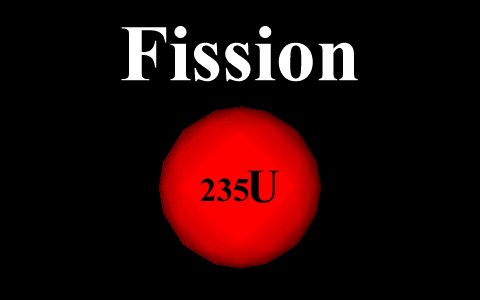 they will then be ready for commercial operation in the 2030s or 40s,
they will then be ready for commercial operation in the 2030s or 40s,
But the scientists and engineers working on the designs have tough technical problems to solve. They also have to convince investors that the advantages of these new reactors will be worth the billions needed to get them working.
All existing nuclear reactors – as well as the third-generation and fourth-generation designs – produce energy by splitting a heavy nucleus. These are usually of uranium-235, sometimes of plutonium-239. This splitting is called fission. There is another type of nuclear reactor that uses a totally different type of nuclear reaction called fusion.
Nuclear fusion is what powers the sun and stars. But it's much harder to harness here on Earth. It hasn't been done and it won't be done for a long time.
Chain reaction
In a fission reactor, which is what we're talking about here, the splitting of a heavy nucleus happens when it is hit by a flying neutron. The splitting releases energy and gives off more neutrons that go on to split more nuclei.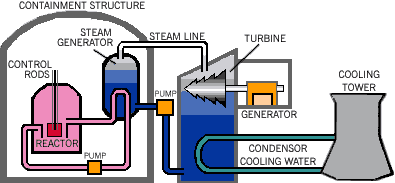
In this way we get a chain reaction. Soon large numbers of nuclei are being split, giving off neutrons, setting off more fissions and releasing huge amounts of heat
In a nuclear reactor all this is controlled. The heat is carried away by a coolant. This might be a liquid – very often water – or a gas, depending on the reactor design. The coolant is used to produce steam that drives a turbine and generates electricity – which is what it's all about.
Most existing nuclear plants are light-water reactors. These use U-235as the fissile material – the fuel that fissions. They use ordinary, very pure water as the coolant. In a light water reactor the coolant is also the moderator. What is that? 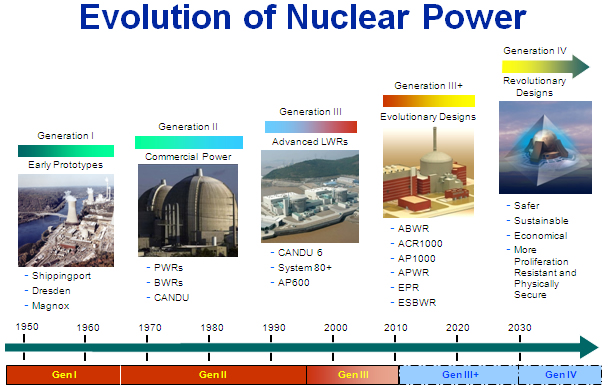
Slow down guys
Well the moderator is a material that moderates the speed of the neutrons that come whizzing out when a heavy nucleus splits. In other words it slows them down. If these neutrons aren't slowed, too few of them get captured by other nuclei. So we don't get the chain reaction we need.
The moderator has to be a material made of light nuclei. Water is good because each molecule of water has two atoms of hydrogen. These have the lightest nuclei there is – just one proton, which is pretty much the same mass as the neutron.
So a neutron whacking into hydrogen is a bit like the cue ball hitting a red in snooker. It gets slowed down a lot by the collision.
Now imagine a cannon ball on your snooker table and fire the cue ball at that. It'll come bouncing off at pretty much the same speed it hit. That's like a neutron smacking into a heavy nucleus. Which is why heavy nuclei don't work as a moderator. They just don't slow the neutrons down.
Designs 1 and 2
So what about the six new designs for fourth-generation nuclear reactors? Well two of them need a moderator. The supercritical water-cooled reactor is closest to existing light-water reactors. Like these, it will use water as the coolant and as the moderator. 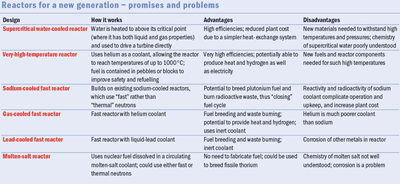
But it will work at far higher temperature and pressure. This will make it more efficient than today's reactors. We'll get more electricity out for the same amount of uranium fuel in – nearly half as much again.
Then there's the very-high-temperature reactor. In this the coolant is helium. The moderator is graphite. This reactor is designed to operate at even higher temperatures – up to 1000 °C – which would raise the efficiency even further.
Both these generation-IV reactors would use U-235 as their fissile material. But U-235 is less than 1% of uranium as it's dug out of the ground. The rest is U-238.
Fast reactors
With today's nuclear reactors that U-238 is pretty useless. It ends up either as "depleted uranium", after the natural uranium has been enriched to produce reactor fuel.
Or it is discarded as nuclear waste after the fissile part of the fuel has been used up in the reactor.
This is why many nuclear experts believe this "open fuel cycle" is a waste of resources. It would be better, they say, to recycle the depleted uranium and the U-238 in the spent fuel in a "closed fuel cycle" (figure 2).
The best way to do this is with fast reactors. So the other four generation-IV nuclear reactors are all fast reactors – so called because they don't slow down the fission neutrons. Their chain reaction works with fast neutrons.
But remember that these are far less good at causing more fissions than slow neutrons. So the fuel in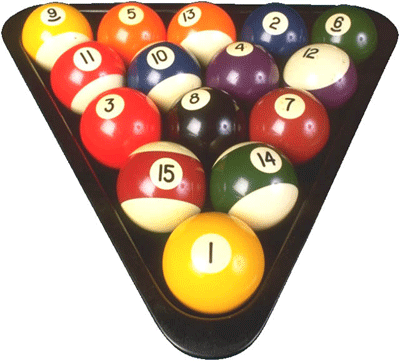 a fast reactor has to have a far higher fraction of fissile material – U-235 or plutonium-239 – to give a chain reaction.
a fast reactor has to have a far higher fraction of fissile material – U-235 or plutonium-239 – to give a chain reaction.
Smart breeders
But what fast reactors do that slow ones don't is make more nuclear fuel. Fast neutrons get absorbed by U-238 – which doesn't fission – turning it into plutonium-239, which does. Fast reactors can even make more fuel than they use – a process known as "breeding" – if you surround the reactor core with a "blanket" of U-238.
Using U-238 in this way would increase the lifetime of the world's uranium – from hundreds to thousands or tens of thousands of years. Fast reactors could also convert some of the long-lived isotopes (known as "transuranics") in used fuel to much shorter-lived ones. This would reduce the volume of nuclear waste that needs to be stored for a long time.
All four of the generation-IV reactor designs we haven't talked about yet are fast reactors. The main difference between them is their cooling systems. So far nearly all the world's fast reactors – such as the one at Dounreay – have used sodium as a coolant.
That's cool
Sodium carries a lot of heat away. But it has big disadvantages. It reacts violently with air or water. So at least two sodium-cooled reactors have been shut down for long periods due to fires. Refuelling and repairs are more complicated and take more time than with water-cooled reactors, because the sodium and air need to be kept apart.
There's also the fact that neutrons make sodium very radioactive. So sodium-cooled fast reactors need an extra loop of sodium to transfer heat from the radioactive sodium that cools the reactor to the steam generators. Without this a fire could let radioactive sodium into the air. But the extra loop adds a lot to the cost of the reactor.
This is why only one of the four generation-IV fast reactors is sodium cooled. But this means the other three are totally untried and will need more development and testing than the other designs. 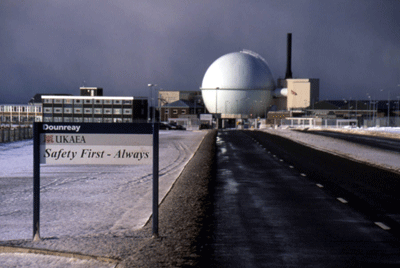
Whether any generation-IV designs are commercialised will depend on a range of issues. These include the need to build a skilled workforce and maintain safety at existing plants, and the problem of what to do with nuclear waste.
Birth and taxes
But as William Nuttall of Cambridge University's Judge Business School says, maybe the most important point is economics. We still don't know if governments will bring in carbon taxes that could make nuclear energy competitive with fossil fuels.
"The question is what the scale of the nuclear renaissance will be, especially in Europe," says Nuttall. "If it means simply replacing nuclear with nuclear, there is probably no need to go beyond light-water reactors.
But if we want to replace coal with nuclear, generation-IV is the way to go, he says. The important thing is to keep options open. "We don't want to be in a position 20 years down the line when we wish we could have done it, but find we can't."
This article is adapted and condensed from one that appeared originally in Physics World.
More help with words
| carbon dioxide | chain reaction | element | fissile | fission | fission (verb) |
| fissionable | fluid | fossilised | fundamental | fusion | global warming |
| isotope | natural uranium | nuclei | nucleus | particle | power |
| pressure | radioactive | technique | temperature | U-235 | watt |
For other websites and resources relevant to this science story try the


